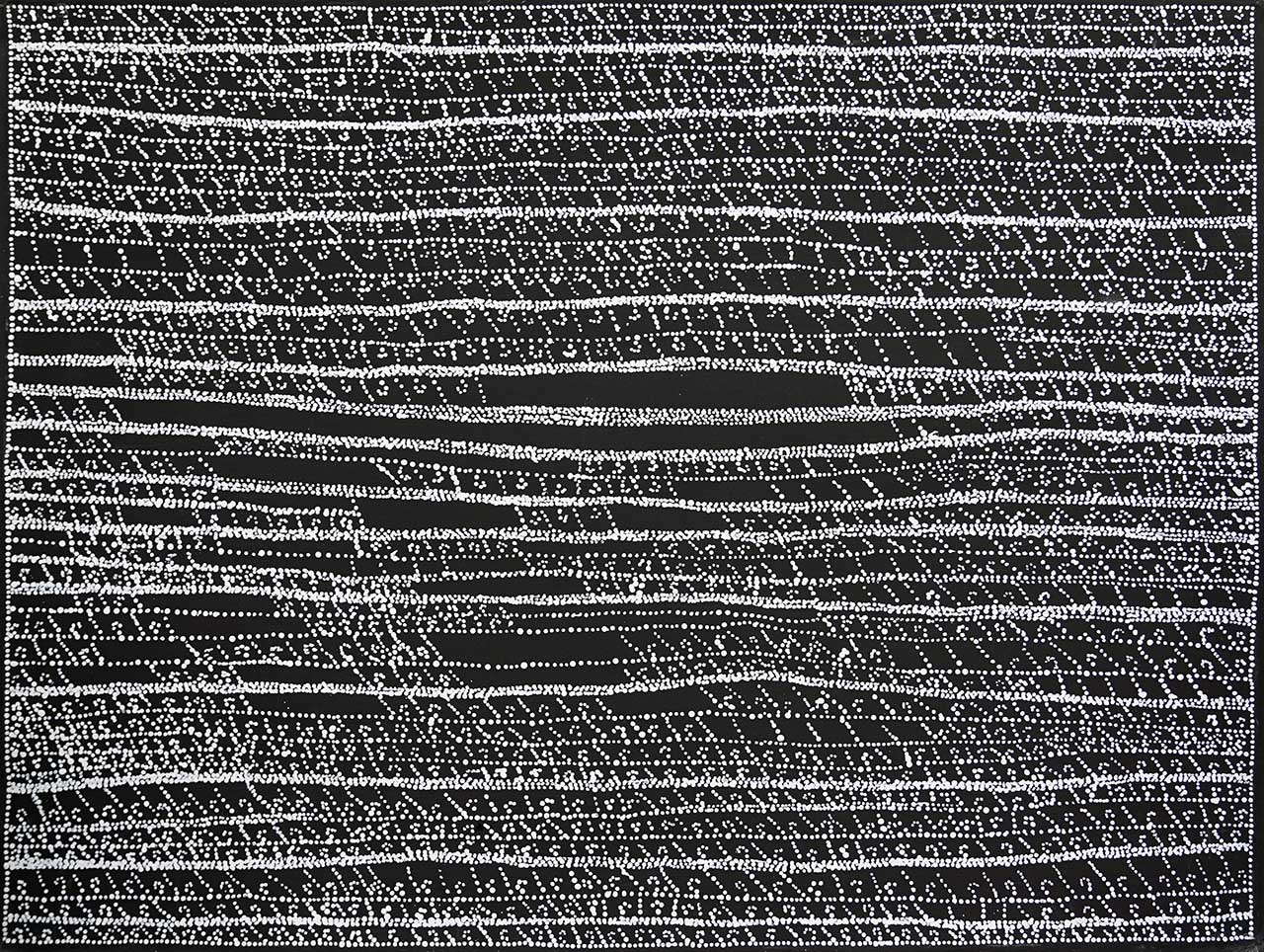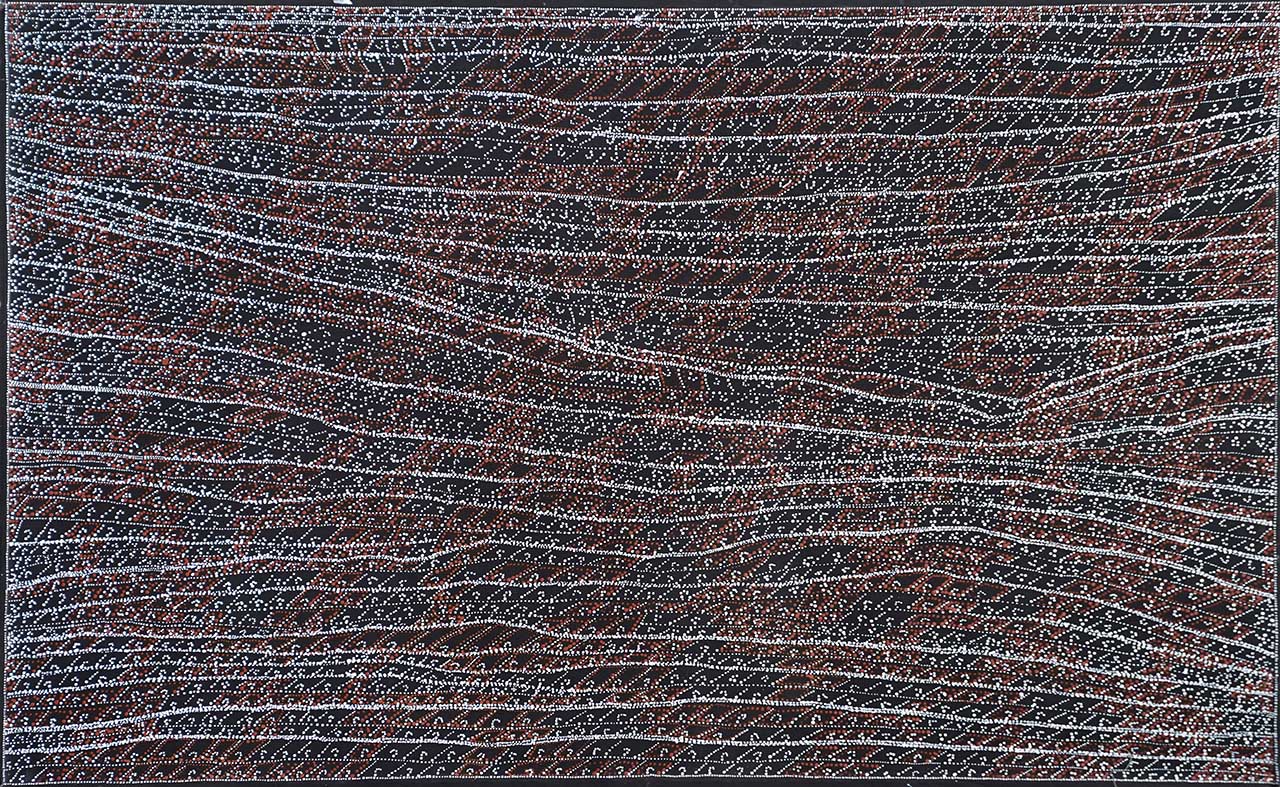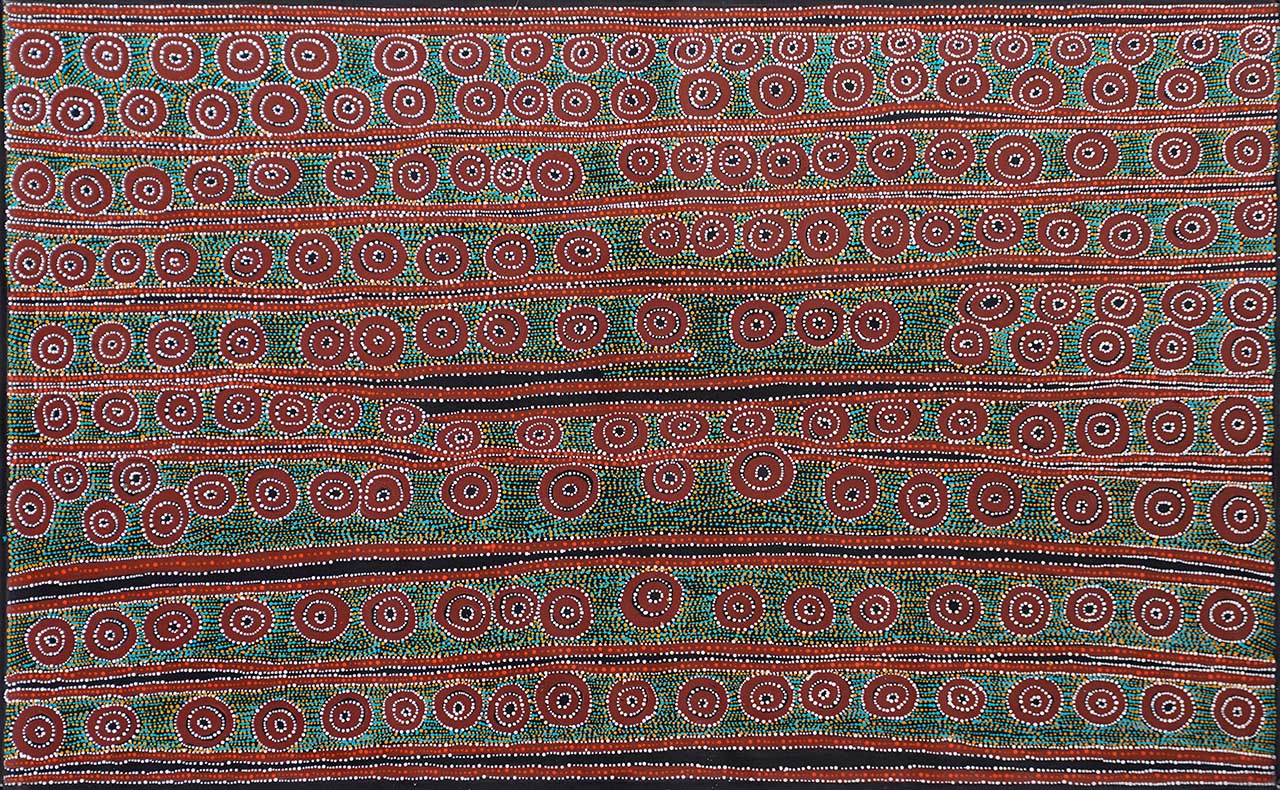Dorothy Napangardi Exhibition Walk Through
David Wroth from Japingka Gallery talks about some of the artworks from the Dorothy Napangardi Retrospective.
Japingka is currently hosting the Dorothy Napangardi Retrospective. We have these wonderful big black and white canvases telling the story of a particularly significant place in the desert, Mina Mina.
Dorothy draws on all the aspects of the story of the Ancestor women who came to this site and drew out the first ever digging sticks from the earth. The women's main artefact, the digging sticks were used for digging yams and vegetables and tubers from the ground. They sprung up out of the earth when the Ancestors passed through this country. It is a tremendously significant place for people from a large number of language groups around there and Dorothy paints many aspects of it.
This particular painting of the story of the digging sticks, shows the digging sticks as represented by desert oaks. These are tall elegant trees by desert standards. They stand out significantly in the open spinifex country. Grasslands are punctuated by the dark upright desert oak trees. This image comes to represent the Ancestors and the way the digging sticks emerged out of the ground when the ancestors travelled there.
Dorothy creates a really complex mapping, an iconographic version of the country. You can see the long bands of parallel sandhills. We've got vast open country punctuated by the vertical lines of the desert oak trees, which are also the emergence of the digging sticks. You'll also notice the little dotted versions of U shapes. This is the symbol that desert people use for people. In this case, the women who are visiting and the U shape is the mark in the sand where they have been.

All the paintings in one way or another refer to the whole episode at Mina Mina and the landscape of that region, the salt lakes. This painting refers to the journey of the Ancestor women. It refers to the digging sticks and the desert oaks.
This painting is incorporating three colours. We've come from a painting that is purely black and white to one that incorporates a red oxide colour in amongst the black and white construction. It's vibrant, but it's also softened by having another colour in the structure of the painting. There's outlining on the sections of the journey and markers between the desert oaks that make up the desert, the digging stick icons.
The whole painting is really a map of meaning. A terrain map indicates how far from one point to another, but these are maps of significant meanings that belong in that desert country. These paintings refer to the Mina Mina women's ceremonial site and other sacred sites along that song line that extends towards Lake Mackay.

This glorious square canvas, one and a half meters square, is Dorothy's most iconic image of Mina Mina. She's titled the painting simply Mina Mina, and it has all these broken sequences. There is a whole interlocking system of lines and they seem to break and waiver, while the whole image has a very organic feel. It also has the sense of there being gap and space between events that happened. To me it suggests vast space and not just land based activity, but activity on a vast scale, whether it's on a geological scale or a cosmic scale. It lets you know that you're looking at something which is much, much greater than you can take in in one single view. It's expansive and all embracing.

This painting is Bush Banana, a work from the early period of Dorothy's output. We can see that even in the early days she was a very successful painter representing bush foods. This painting is of Yuparli or bush banana and these paintings were colourful in a restrained way. They're extremely delicate and informative. There's lots of different structural elements to the painting. This is the style of work Dorothy was doing prior to that life-changing trip she made to Mina Mina. Her visit to that country saw her focus move away from the specifics of what women resourced from the desert country, which are the different types of bush foods. She moved her attention to the bigger scale of the ancestral stories and the country and these two themes shaped her life and her artistic career.

In this long three metre canvas, Dorothy has set up the wavering lines of desert sandhills. Although titled Sandhills the painting has other resonances as well. It's plainly about desert Dreamings and about Jukurrpa and the Dreaming tracks that cross the country.
The extraordinary thing about the desert is while our Western view has always typified it as being vast and empty, when you're with a traditional owner looking at country, there are all sorts of signals and signifiers that are about the nature of the country. These ways of seeing are about the nature of the traditional story that belongs to that country and its creation. They relate to the kind of interaction between why things are as they are and how they were created that way by the Ancestors. Now this artwork by Dorothy really vibrates. We could be looking at a vast expansive ocean or a vast expansive desert country, but plainly it's about the massive extent of the ancestral country that she refers to in all her paintings.

There is a group of paintings that Dorothy calls Beyond Mina Mina. In that title, she is referring to her father's country. If you go beyond that country of the women's ceremonial site, you come to a new group of stories and inheritance. Dorothy refers to some of the stories that belong to her father. So this work is part of her family connection to country on her father's side. These paintings are very different in appearance and in the use of colour to the more austere, mostly black and white paintings of Mina Mina. Here she's used five or six colours. She's used aqua and oranges, gold colours along with red oxide, black and white. These paintings are referring more to her father's inheritance and have quite a different stylistic look to the other works that she has done, although it still holds her great sense of detail and colour and arrangement.
This is a fascinating and important collection of work from one of Australia's most significant artists.

